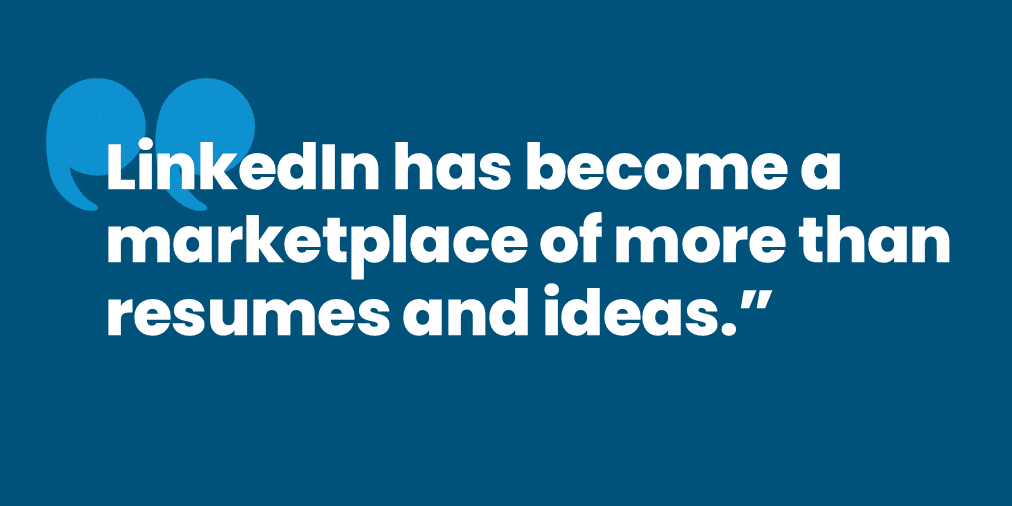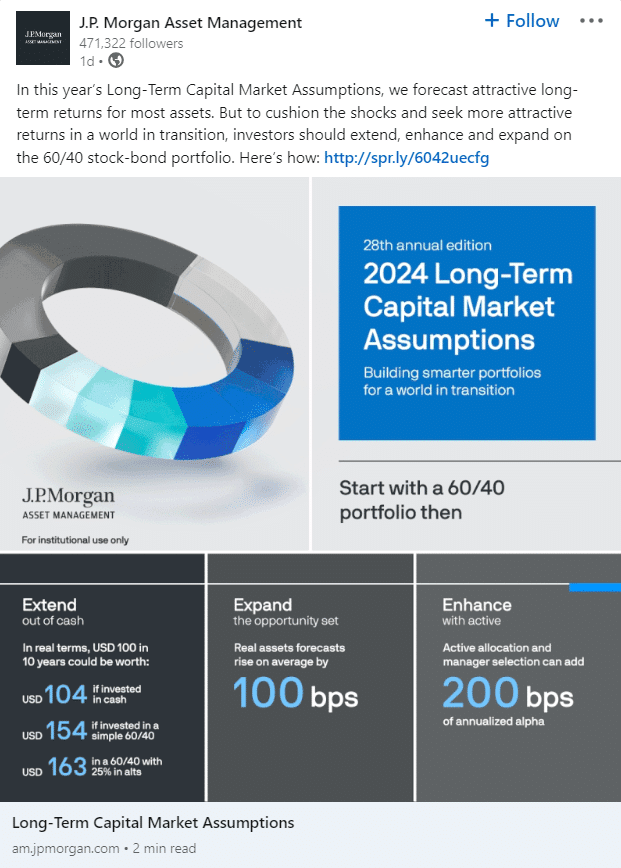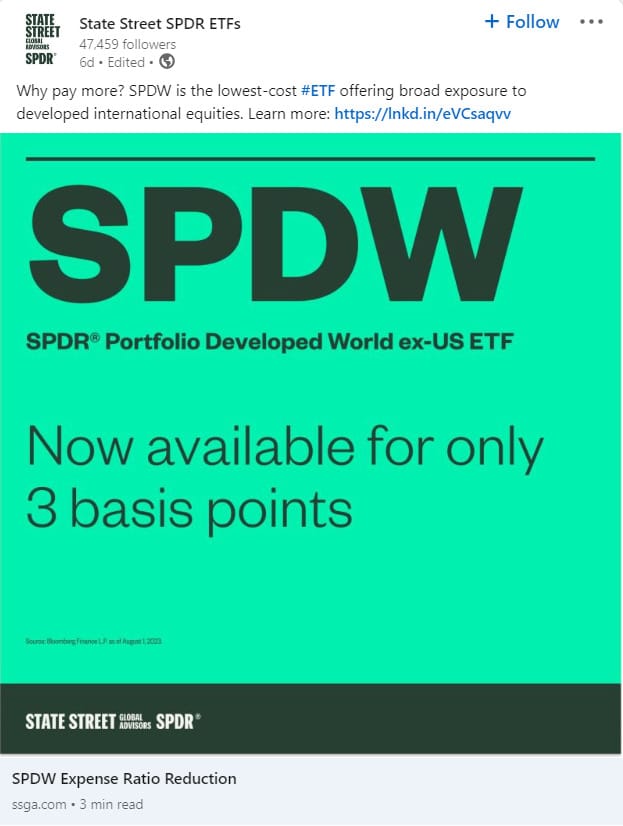
Why not promote mutual funds, ETFs on LinkedIn?
One of my favorite all-time stories has to do with a fire alarm set off at 3 a.m. at the Disneyland Hotel in Anaheim. I was in the hotel, covering a National Association of Realtors convention. At the sound of the alarm, people in various states of “awokeness” emerged from behind their doors up and down the floor, trying to assess the level of risk. One enterprising Realtor stepped out, sized up what was happening and then darted back into his room. Seconds later, he was walking up and down the floor, handing out emery boards with his firm’s name. “If you’re ever looking for property in Tucson…”
When you’re in Sales—and maybe in Marketing, too—any congregation of people may represent an opportunity for you to deliver your message. I’m a daughter and sister of sales professionals, and I have no problem with that.
So, have you noticed all the mutual fund and ETF product advertising happening on LinkedIn lately?
Commercial messages are a noticeable departure from LinkedIn’s origins as a professional networking and job searching site. Back in the day, individual members took great pains to put their best foot forward. There was a lot of posing, and I found it all a bit stuffy. But over the years, and with the rise of company postings and the introduction of many content and commercial offerings, LinkedIn has become a marketplace of more than resumes and ideas. Investment products are being marketed right along with credit cards and residential property listings.
How we got here
Asset managers first tested the waters by posting about and then promoting their thought leadership, and that’s worked beautifully. Shown below is an awesome example from J.P. Morgan Asset Management and note the response to it.

(By the way, while we’re on the topic of thought leadership and social media: PDF carousels have been a common way for fund companies to share thought leadership on LinkedIn. I’d encourage you to think twice about that. Fine to give readers a taste but don’t you want them to engage on your site? LinkedIn prefers you to keep members on their platform for the very reason that should motivate you to move them to your site. If you provide all the content on LinkedIn, you forfeit the opportunity to capture all but the most basic analytics LinkedIn provides. By directing members to your site, and assuming they follow, you can benefit more from their engagement with the content that you went to the trouble to create [see 4 must-reads if your job involves reaching and engaging financial advisors]. If you insist on delivering the full document on LinkedIn, at least pay LinkedIn to add a lead gen form to capture names.)
Several firms use the blogs on their website to comment on their products—and they share those posts organically as content, as shown below in a Catalyst post.

The natural next step was to promote products explicitly, whether organically with a few lines in a post and a link to a fund profile or a display-type image backed by an ad budget. This organic SPDR post—rare in itself to lead with price!—links to a fund profile.

And, finally, here’s a paid Capital Group post promoting a series of ETFs.

Not only has there been little pushback (as in, “Hey now, this isn’t the place for that”), promoting your product on LinkedIn raises the possibility that others will “endorse” it in the form of liking or even reposting. That is a sweet deal. Media sites, for all the value they offer to an advertiser, can’t compete with that. When was the last time you heard of a reader sharing a banner ad?
Would you like to talk more digital strategy? Lowe Group’s LG Digital offers a range of services related to digital marketing, send us a note for more information.
Subscribe.
Receive the latest news and insights from Lowe Group.